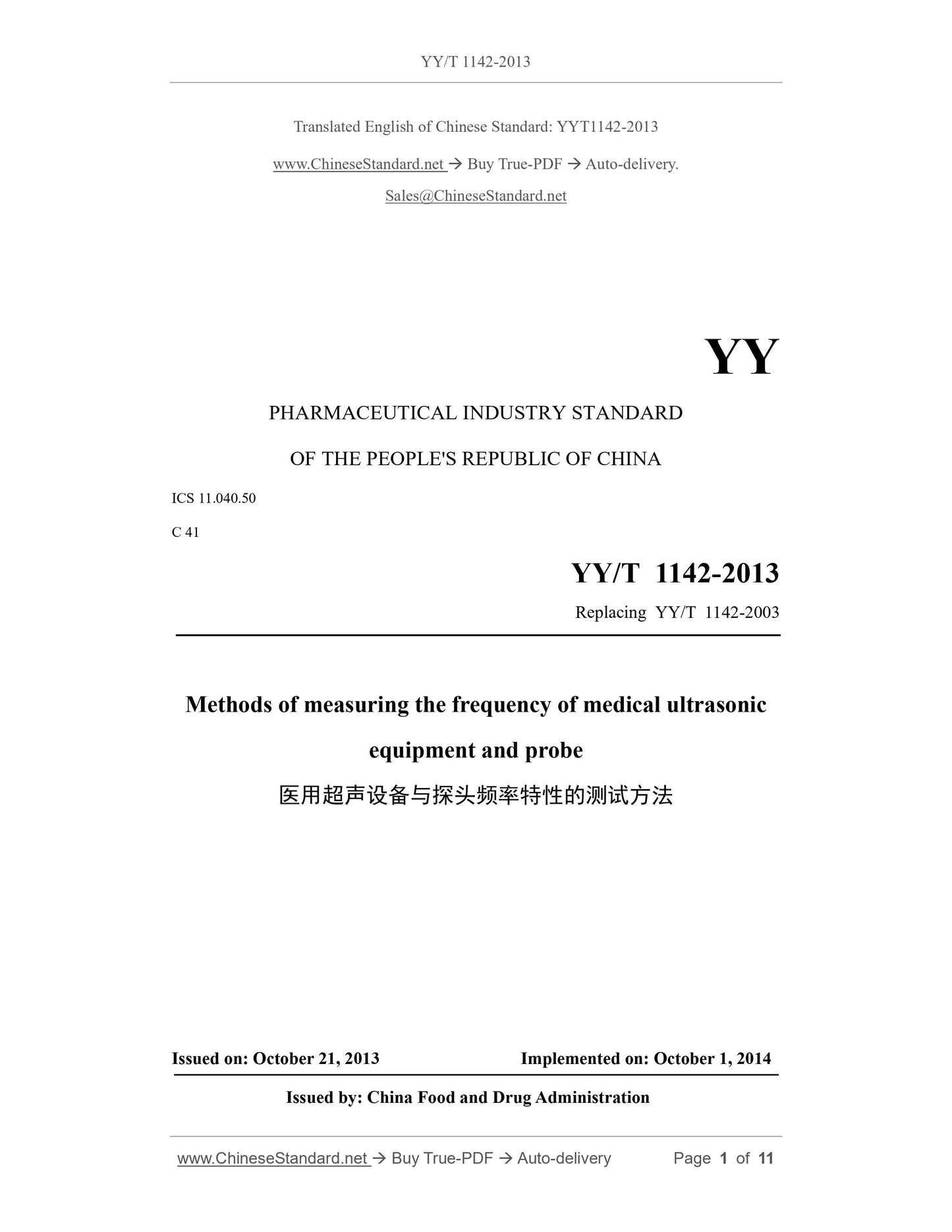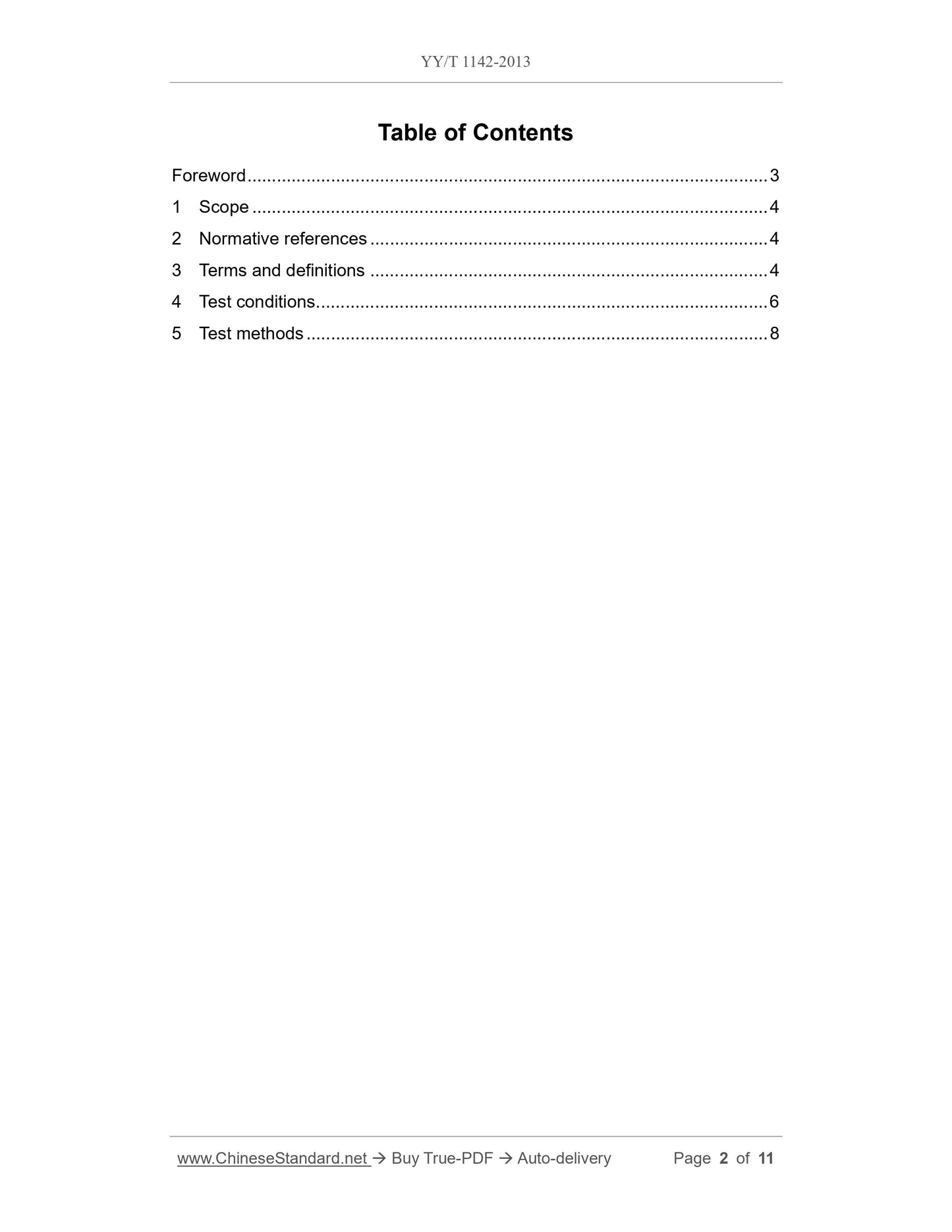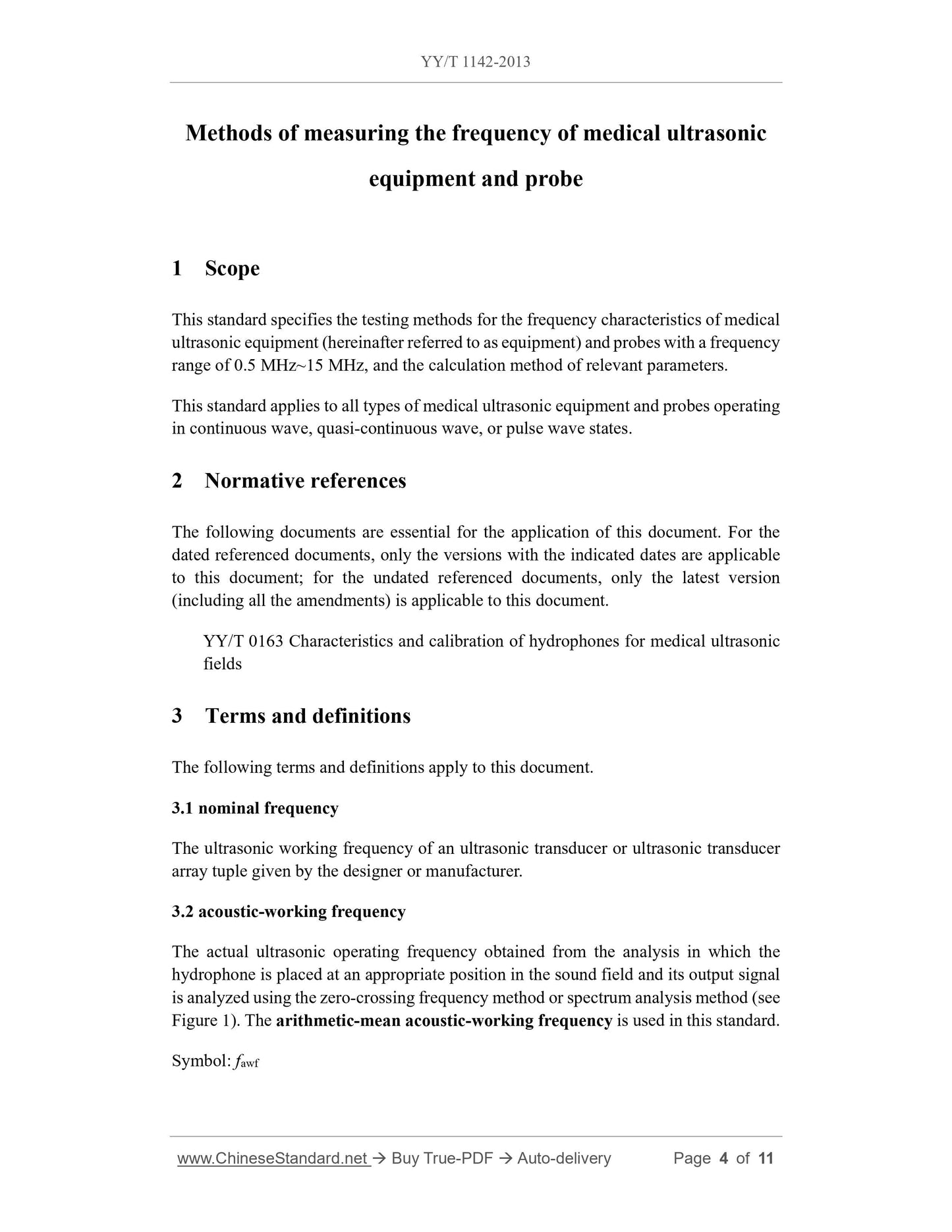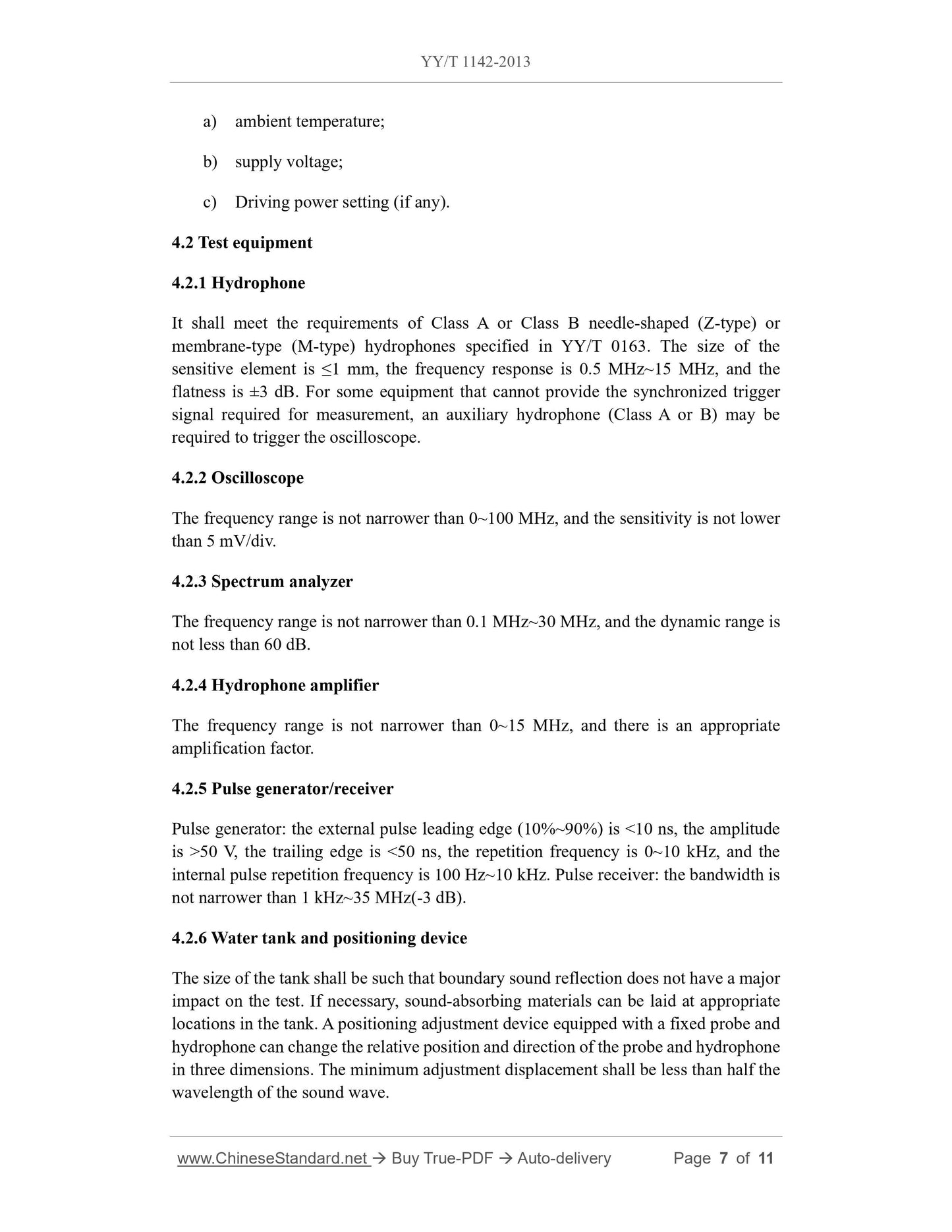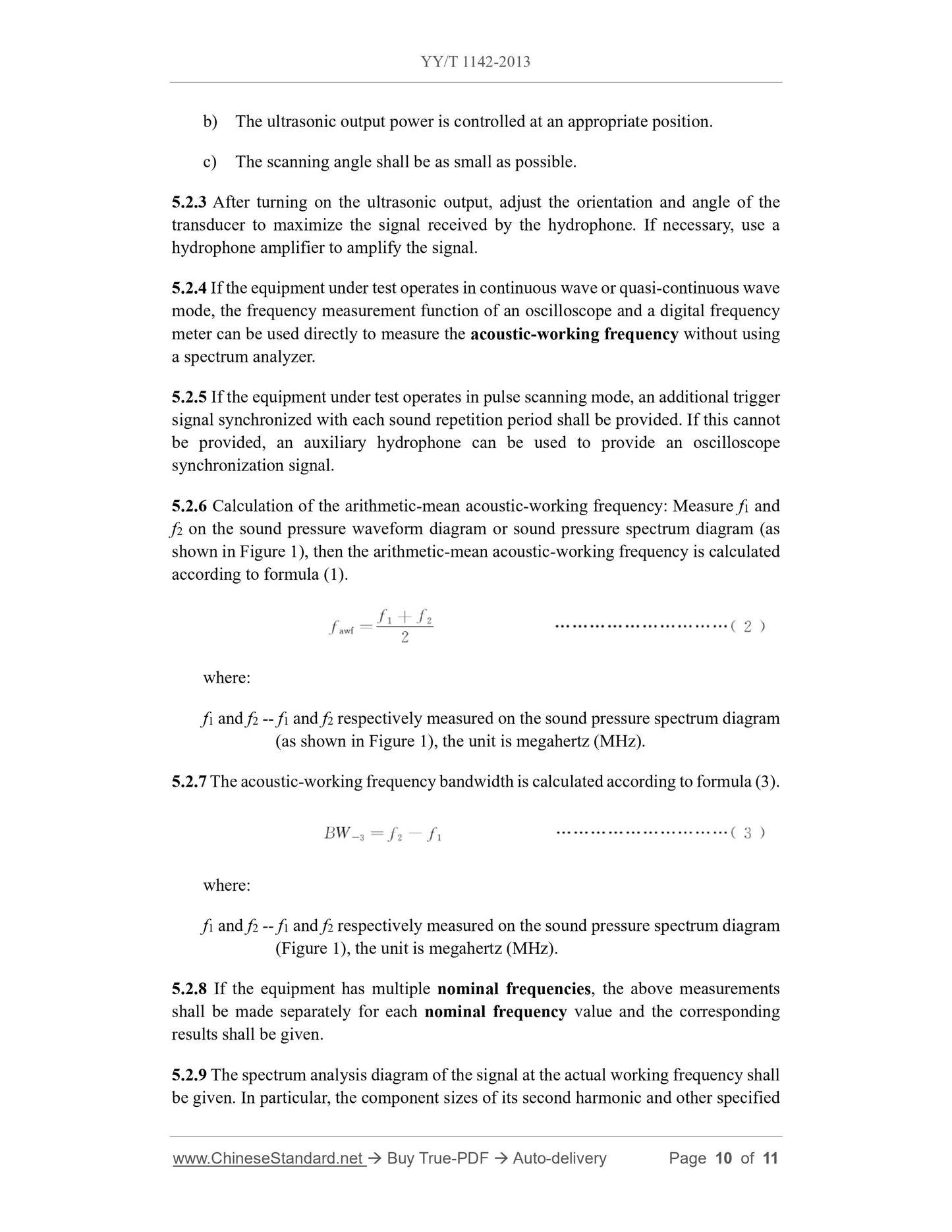1
/
of
5
www.ChineseStandard.us -- Field Test Asia Pte. Ltd.
YY/T 1142-2013 English PDF (YY/T1142-2013)
YY/T 1142-2013 English PDF (YY/T1142-2013)
Regular price
$175.00
Regular price
Sale price
$175.00
Unit price
/
per
Shipping calculated at checkout.
Couldn't load pickup availability
YY/T 1142-2013: Methods of measuring the frequency of medical ultrasonic equipment and probe
Delivery: 9 seconds. Download (and Email) true-PDF + Invoice.Get Quotation: Click YY/T 1142-2013 (Self-service in 1-minute)
Newer / historical versions: YY/T 1142-2013
Preview True-PDF
Scope
This standard specifies the testing methods for the frequency characteristics of medicalultrasonic equipment (hereinafter referred to as equipment) and probes with a frequency
range of 0.5 MHz~15 MHz, and the calculation method of relevant parameters.
This standard applies to all types of medical ultrasonic equipment and probes operating
in continuous wave, quasi-continuous wave, or pulse wave states.
Basic Data
| Standard ID | YY/T 1142-2013 (YY/T1142-2013) |
| Description (Translated English) | Methods of measuring the frequency of medical ultrasonic equipment and probe |
| Sector / Industry | Medical Device and Pharmaceutical Industry Standard (Recommended) |
| Classification of Chinese Standard | C41 |
| Classification of International Standard | 11.040.50 |
| Word Count Estimation | 8,859 |
| Older Standard (superseded by this standard) | YY/T 1142-2003 |
| Quoted Standard | YY/T 0163 |
| Regulation (derived from) | State Food and Drug Administration announcement 2013 No. 36; industry standard for filing Notice 2013 No. 12 (No. 168 overall) |
| Issuing agency(ies) | State Food and Drug Administration |
| Summary | This standard specifies: the frequency range 0, MHz ~ 1, within MHz medical ultrasound equipment (hereinafter referred to as the device) and the probe frequency characteristics Test methods and parameters calculation method. This standard applies to: oper |
Share
